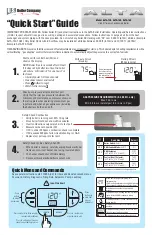
25
ENGLISH
4.6 Adjustments
The boiler has already been adjusted by the manufacturer during
production. If the adjustments need to be made again, for example after
extraordinary maintenance, replacement of the gas valve, or conversion
from methane gas to LPG, observe the following procedures.
The adjustment of the maximum and minimum output, and of the maximum
and minimum heating and of slow switch-on, must be made strictly in the
sequence indicated, and only by qualified personnel only:
- disconnect the boiler from the power supply
- turn the heating water temperature selector to its maximum (fig. 38)
- loosen the fixing screws (E) on the instrument panel (fig. 14)
- lift then turn the instrument panel towards you
- loosen the fixing screws on the cover (F) to access the terminal board
(fig. 16)
- insert the jumpers JP1 and JP3 (fig. 39)
- power up the boiler
The three LEDs on the instrument panel flash simultaneously and the
display shows “ADJ” for approximately 4 seconds
Next change the following parameters:
1 - Domestic hot water/absolute maximum
2 - Minimum
3 - Heating maximum
4 - Slow switch-on
as follows:
- turn the heating water temperature selector to set the required value
- press the CO button (fig. 26) and then skip to the calibration of the next
parameter.
Live electrical parts (230 V AC).
The following icons light up on the monitor:
1.
during domestic hot water/absolute maximum calibration
2.
during minimum calibration
3.
during heating maximum calibration
4.
during slow switch-on calibration
End the procedure by removing jumpers JP1 and JP3 to store these set
values in the memory.
THE function can be ended at any time without storing the set values in the
memory and retaining the original values as follows:
- remove jumpers JP1 and JP3 before all 4 parameters have been set
- set the function selector to
(OFF/RESET)
- cut the power supply
- waiting for 15 minutes after it is connected.
Calibration can be carried out without switch on the boiler.
By turning the heating selection knob, the monitor automatically
shows the number of rotations, expressed in hundreds (e.g. 25 =
2,500 rpm).
GAS VALVE CALIBRATION
- Connect the boiler to the power supply
- Open the gas tap
- Set the function selector to
(OFF/RESET) (monitor off)
- Loosen the screws (E), remove the housing, then lower the instrument
panel towards you (fig. 14)
- Loosen the fixing screws on the cover (F) to access the terminal board
(fig. 16)
- Press the CO button (fig. 26)
Live electrical parts (230 V AC).
- Wait for burner ignition.
The display shows “ACO” and the yellow LED flashes. The boiler
operates at maximum heat output.
The “combustion analysis” function remains active for a limited time (15
min); if a delivery temperature of 90°C is reached, the burner is switched
off. It will be switched back on when this temperature drops below 78°C.
- Insert the analyser probe in the ports provided in the air distribution box,
after removing the screws from the cover (fig. 40)
- Press the “combustion analysis” button a second time to reach the
number of rotations corresponding to the maximum domestic hot water
output (table 1); the yellow LED continues to flash while the red LED is
fixed
- Check the CO2 value: (table 3) if the value does not match the value
given in the table, use the gas valve maximum adjustment screw
- Press the “combustion analysis” button a third time to reach the number
of rotations corresponding to the minimum output (table 2); the yellow
LED continues to flash while the green LED is fixed
- Check the CO2 value: (table 4) if the value does not match the value
given in the table, use the gas valve minimum adjustment screw
- To exit the “combustion analysis” function, turn the control knob
- Remove the flue gas probe and refit the plug
- Close the instrument panel and refit the housing.
The boiler is supplied with the adjustments shown in the table. De-
pending on plant engineering requirements or regional flue gas emis-
sion limits it is, however, possible to modify this value, referring to the
graphs below.
1200
1600
2000
2400
2800
3200
3600
4000
4400
4800
5200
5600
6000
6400
4
6
8
10
12
14
16
18
20
22
24
26
0
10
20
30
40
50
60
70
80
90
100
110
120
130
140
150
160
170
180
190
200
4
6
8
10
12
14
16
18
20
22
24
26
Heat output (kW)
COs.a. curve (Qnheating) - 25kW
CO emissions s.a. (p.p.m.)
Heat output (kW)
HTG curve (Qnheating) - 25kW
Fan rotations (rpm)
Table 1
Maximum number
of fan rotations
Methane gas
(G20)
Liquid gas
(G31)
Heating
49
49
rpm
DHW
61
61
rpm
Table 2
Minimum number of
fan rotations
Methane gas
(G20)
Liquid gas
(G31)
14
14
rpm
Table 3
Max CO
2
Methane gas
(G20)
Liquid gas
(G31)
9,0
10,5
%
Table 4
Min CO
2
Methane gas
(G20)
Liquid gas
(G31)
9,5
10,5
%
Table 5
Slow ignition
Methane gas
(G20)
Liquid gas
(G31)
40
40
rpm
















































